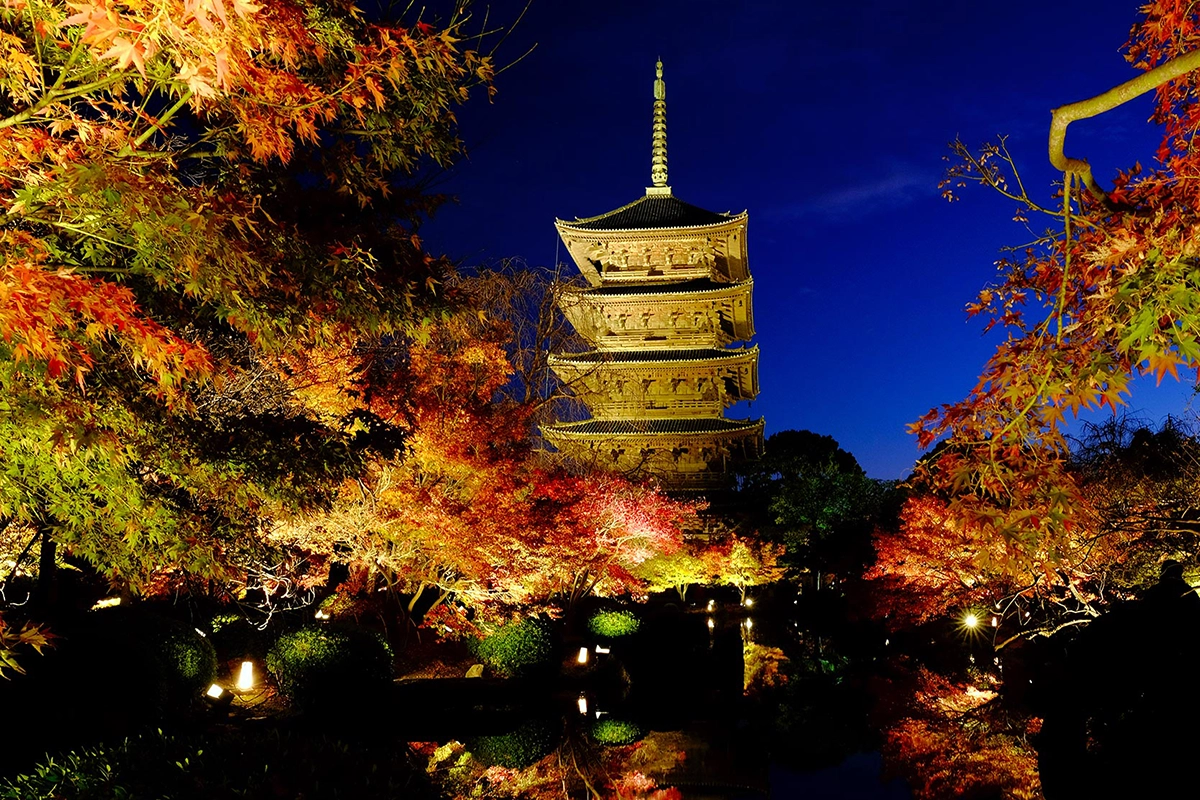To-ji
東寺
UNESCO World Heritage Site
Step into Kyoto's timeless embrace at To-ji.

UNESCO World Heritage Site
Call this number
Google Map in English
Google Maps in Japanese
During a junior high school field trip, I had the chance to explore one of Japan’s most renowned temples, To-ji, located just south of Kyoto Station. I remember being struck by the vastness of the complex, a sprawling collection of buildings each with its own story. Since then, we keep returning to enjoy this special place. To-ji isn’t just another stop on a tourist’s itinerary; it’s a living piece of history, a UNESCO World Heritage Site that feels like a portal back to a time when emperors and samurai roamed Japan.
Built way back in 796 AD during the Heian period, To-ji has stood the test of time, evolving from a mere structure to a cornerstone of Japanese spirituality and culture. The temple is anchored by its five-story pagoda, the tallest wooden pagoda in Japan, soaring up to 55 meters. Built in 1644, the pagoda is not only a marvel of ancient engineering but also a canvas of intricate carvings and lavish decorations that showcases the meticulous skill of its creators. Standing there, looking up at the pagoda, you feel a mix of awe and insignificance—the kind that only comes when you’re in the presence of something truly monumental.
But To-ji is more than just its pagoda. The temple grounds themselves are vast, offering a peaceful escape from the hustle and bustle of city life. The main hall, or kondo, is particularly imposing. Step inside, and you’re surrounded by an array of Buddhist statues and religious artifacts that seem to whisper tales of devotion and mysticism. Walking through these halls, it’s easy to get lost in thought, reflecting on the centuries of worship that these walls have witnessed.
Outside, the temple gardens are a sanctuary of tranquility. With lush greenery, soothing water features, and the overall serenity of the place, it’s a perfect spot for a bit of soul-searching or just a quiet moment away from the noise of everyday life.
Yet, To-ji’s charm extends beyond its physical boundaries. It sits at a unique crossroads where Kyoto’s tradition meets its modern pace. Just outside the temple gates, the city buzzes with a vibrant blend of old and new. The streets are dotted with a mix of traditional tea houses serving up steaming matcha and modern cafes offering trendy takes on Japanese cuisine. It’s here that you can see the city’s heart beating, where kimono-clad locals brush shoulders with tourists, each adding a layer to Kyoto’s rich cultural tapestry.
Don’t pass up the chance to delve into Kyoto’s culinary scene while you’re here. The area around To-ji is rife with opportunities to try kaiseki, a sophisticated style of Japanese dining that’s as much art as it is food. And as you wander through the local shops, keep an eye out for handmade crafts—ceramics, textiles, and kimonos that are as much a piece of Kyoto as the temple itself.
Visiting To-ji isn’t just about seeing a site; it’s about experiencing a journey through time. From the majestic pagoda and the hallowed halls to the serene gardens and the lively streets around, everything about To-ji invites you to delve deeper into Kyoto’s story. It’s a place where the past isn’t just remembered; it’s palpable.
So, if you ever find yourself in Kyoto, make your way to To-ji. Whether you’re looking to connect with Japan’s ancient past or just seeking a moment of peace in a busy city, To-ji offers a unique blend of history, culture, and spirituality that’s hard to find anywhere else. In this city that so beautifully straddles the line between the old and the new, To-ji stands as a proud reminder that the past is always present and the future is just a step away.
Contact us at [email protected], or click here to use our contact form.
Submission successful. You will receive a confirmation email, shortly.